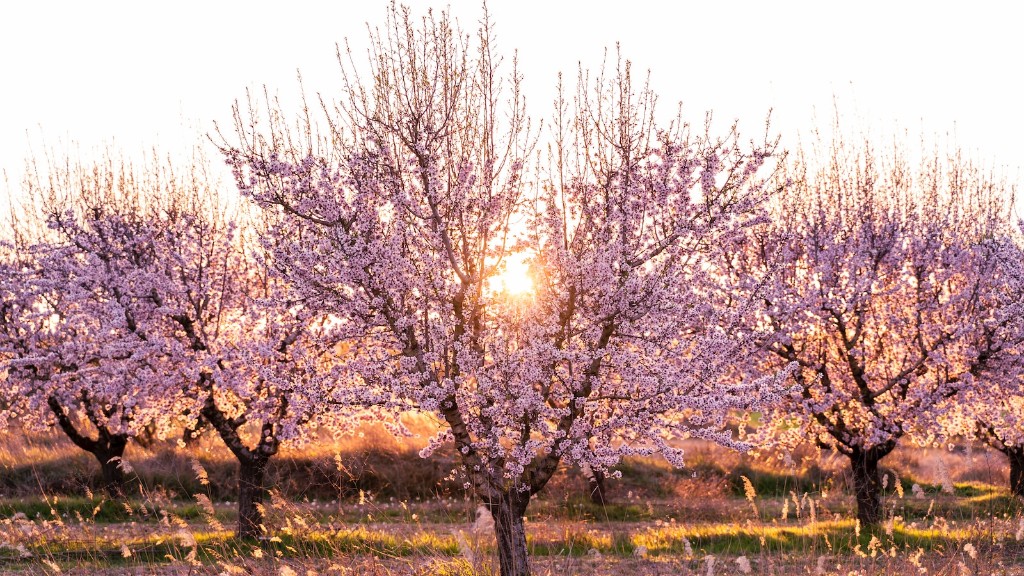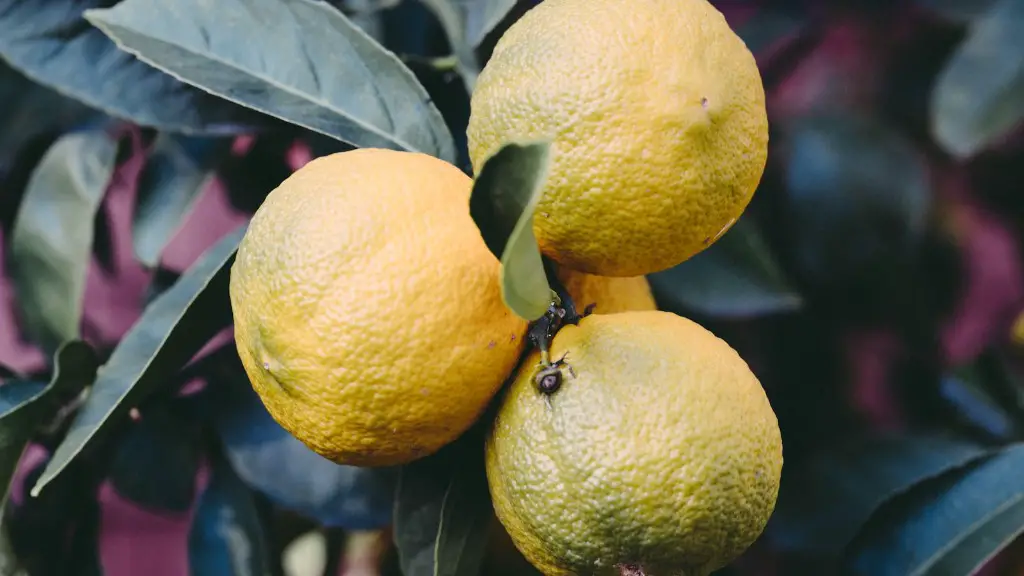How to grow a Cherry Tree from Cherry Seeds
Growing a cherry tree from cherry seeds can be a fun and rewarding project for the avid gardener. Here you can find the information and tips to follow in order to successfully grow your own cherry tree.
First, you need to decide which type of cherry tree to grow. Sweet cherry trees, like Bing, Lambert and Rainier, are popular in the United States. Sour cherry trees, such as Montmorency, can produce tart cherries that are perfect for pies.
Once you have decided on the type of cherry tree, you can select or purchase the appropriate cherry seed. Because cherry seeds are typically available only from the parent tree and its close relatives, you will need to know the parent tree for your selected cherry tree varietal in order to find the right seeds.
To plant the cherry tree seeds, you will need to carefully prepare the soil using organic matter like compost. Dig a hole of appropriate size for each seed and add a handful of compost. Place the cherry seeds into each hole and gently cover them with more compost.
If the weather is cold, the seeds should be planted indoors. Plant the seeds in containers filled with organic potting soil and a bit of organic fertilizer. Position the containers in a moderately sunny spot and water them fairly regularly.
Cherry tree seeds require several months of germination before they start to sprout. When the seedlings are around two feet tall and the trunk is around eight inches thick, they can be planted outdoors.
Once the seedlings have been planted outdoors, you should water them in the morning and then again in the evening. Apply a layer of mulch around the base of the tree to help keep the soil moist. Prune the tree annually to keep it healthy and promote flower production.
Propagating a Cherry Tree from Cuttings
In addition to growing a cherry tree from seed, you can also propagate the tree from cuttings taken from healthy cherry trees. To propagate a cherry tree from a cutting, you will need to take a cutting that is around six inches long and has at least three leaf nodes.
Once you have taken the cutting, you will need to soak it in a rooting hormone solution for several hours. After the cutting has been soaked, plant it in a well-draining potting soil mix. Once planted, the cutting should be kept warm and moist and in bright, indirect sunlight.
The cutting should take root within two to four weeks. If the cutting begins to wilt, water it more often. When the roots start to develop, it can be transplanted into well-draining soil in a sunny spot outdoors or into a pot inside.
Propagating a cherry tree from cuttings is a great way to quickly and easily obtain a new cherry tree. However, it is important to note that cherry trees propagated from cuttings may produce fruit that is not true to its parent varietal, so the exact type of fruit the tree produces may be unknown.
Pest Control for Cherry Trees
Like any other fruit tree, cherry trees are vulnerable to pests and diseases. Preventative measures are key to keeping your cherry tree healthy and free of problems. The most common pests of cherry trees are caterpillars, aphids, spider mites, and scale insects.
To help deter pests, plant your cherry tree in well-draining soil and mulch around the base. Regularly check the tree for any signs of pest damage. If you do find pests, use natural, organic pest control methods such as neem oil, soap, or hot pepper spray.
If you are growing your cherry tree in a container, be sure to use a potting mix that is made of high quality, organic material. Regularly check for pests, and clean the container to reduce the risk of pest infestation.
If you have been spraying your cherry tree with chemical pesticides, it is important to stop using them. Chemical pesticides can be harmful to beneficial insects, such as bees and butterflies, and can have a negative effect on the environment.
Harvesting and Storing Cherries
When it comes to harvesting and storing cherries, timing is key. Sweet cherries should be harvested when they are fully ripe — they should be plump and dark red in color. Sour cherries should be harvested when they are a deep, almost purple color and are just slightly soft to the touch.
Once the cherries have been harvested, you can store them for up to two weeks in the refrigerator. To ensure maximum freshness and shelf life, be sure to store the cherries in an airtight container.
Dried cherries can also be stored for a longer period of time. To dry cherries, spread the cherries out on a baking sheet in the oven at a low temperature — around 175-200 degrees Fahrenheit — for four to six hours. Store the dried cherries in a glass jar in a cool, dark place.
For those who do not wish to eat the cherries, you can also make cherry jam or jelly with the fruit. If you’re feeling adventurous, you can even make your own homemade cherry wine!
Frequently Asked Questions
Q: How long will it take for my cherry tree to bear fruit?
A: It can take three to five years for a cherry tree to bear fruit. However, if you have taken cuttings, your tree may start bearing fruit sooner — in as little as two years.
Q: When should I prune my cherry tree?
A: Pruning should be done in late winter or early spring, when the tree is still dormant. Pruning in late summer or fall can lead to increased risk of disease and pests.
Q: How often should I water my cherry tree?
A: During hot and dry weather, your cherry tree should be watered every other day if it is not receiving enough rainfall. During cooler and wetter weather, it is not necessary to water your cherry tree as regularly.
Insect Repellents and Traps
Insect repellents and traps are a great way to protect your cherry trees from pests. A few popular methods of pest control include sticky traps, pheromone traps, and nematodes. Sticky traps are simple wooden boards that have been coated with a sticky substance. When insects touch the sticky surface, they become stuck and can be disposed of easily.
Pheromone traps are made from cardboard and are baited with the scent of a female insect. When the male insects are attracted to the trap, they are stuck and must be disposed of. Nematodes are tiny organisms that can be applied to the soil and trap pests such as grubs and caterpillars.
When using insect repellents and traps, it is important to follow the instructions carefully in order to ensure they are used safely and effectively. Additionally, if you find the traps and repellents are not working, it may be time to call a professional pest control service.
Organic Fertilizers
Organic fertilizers are an important part of maintaining a healthy, productive cherry tree. The two most common organic fertilizers are compost and manure. Compost is made of decomposing plant matter and is a natural, slow-releasing fertilizer. Manure is a great source of nitrogen and other nutrients and can be used to enrich the soil. Both of these fertilizers should be applied to the soil twice a year — once in the spring and once in late summer.
In addition to compost and manure, there are other organic fertilizers to consider. Fish emulsion, for example, is a great source of nitrogen and potassium and can be used to fertilize young trees. Seaweed is also a great fertilizer that can be applied to the soil or sprayed on the leaves of the cherry tree.
Organic fertilizers can help to keep your cherry trees healthy and productive. Be sure to use them as often as needed and in the right amounts, and your cherry trees will be sure to thrive.




